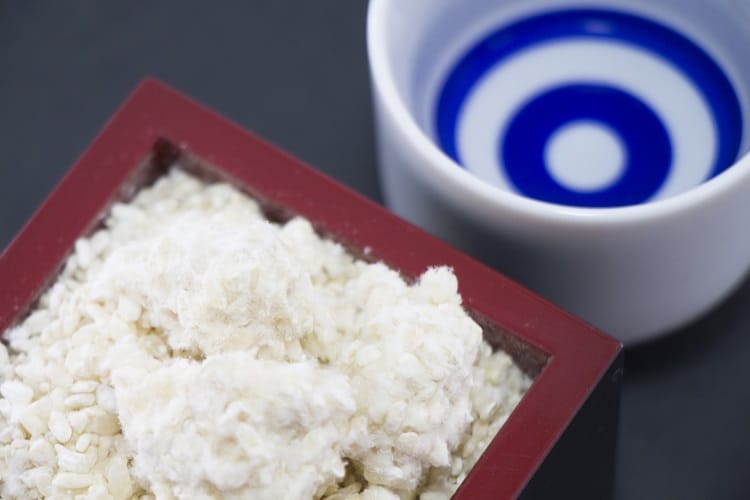
Difference between brewer's preferred rice and edible rice
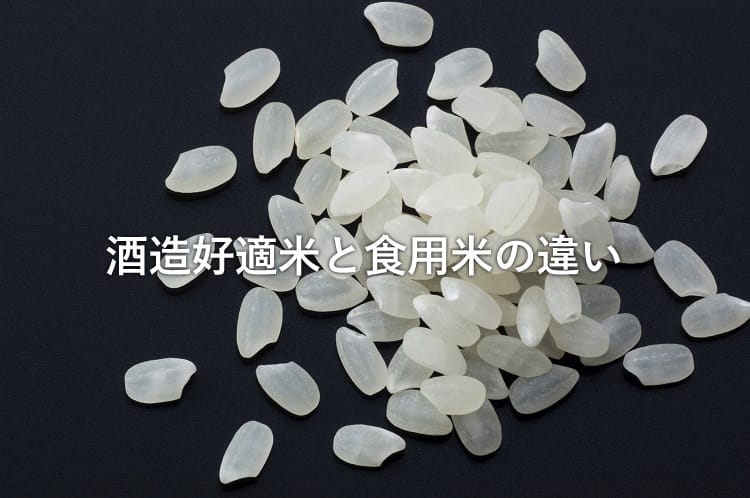
The main ingredient of sake is rice. Even if we say rice, it is different from the edible rice we usually eat, it is for sake only"Sake Brewery Suitable Rice"Is used.
Since 1951, it has been called “Sake Brewery Suitable Rice” to distinguish it from general rice. There are so many different types of “rice suitable for sake brewing” that are suitable for sake brewing, and the number is now more than 100 nationwide.
There are various differences between brewing suitable rice and edible rice. The main points are the following 4.
That 1: Grain is big
Sake brewing suitable rice is characterized by large grains of rice compared to edible rice. Sake brewing suitable rice isBecause it is necessary to sharpen the surface much more than edible rice, rice with small grains will break immediately..
Speaking of 1000 grain weight (weight measured in thousands of rice), brewing suitable rice is25 to 30gWhereas edible rice24g or lessIs the weight.
That 2: hearty white
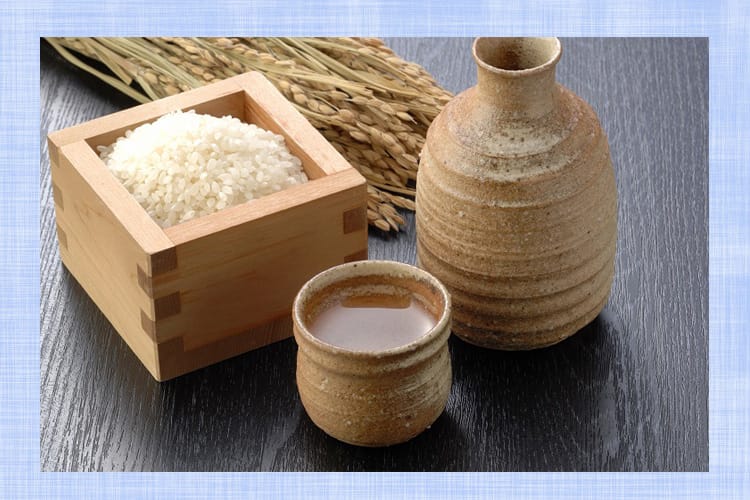
The biggest feature of sake-brewed rice is that it has a greater interest than edible rice. With heart whiteThe part of the rice that appears white and cloudy when seen through the light.Refers to.
By having a moderate size heart,Aspergillus oryzae hyphae can easily penetrate into the center, saccharification of rice starch, which is indispensable for sake brewing, is promotedThere is a merit that.
In addition, since heart white is soft, it has excellent water absorption and is easy to dissolve during fermentation.
Part 3: Low protein and lipid content
One of the characteristics of brewer's preferred rice is that it contains less protein and lipid than edible rice.
Proteins and lipids in rice are delicious when eaten as rice.When it comes to sake, it shows up as bitterness, miscellaneous taste, and off-flavorIt is
The 4: Inaho is tall and expensive
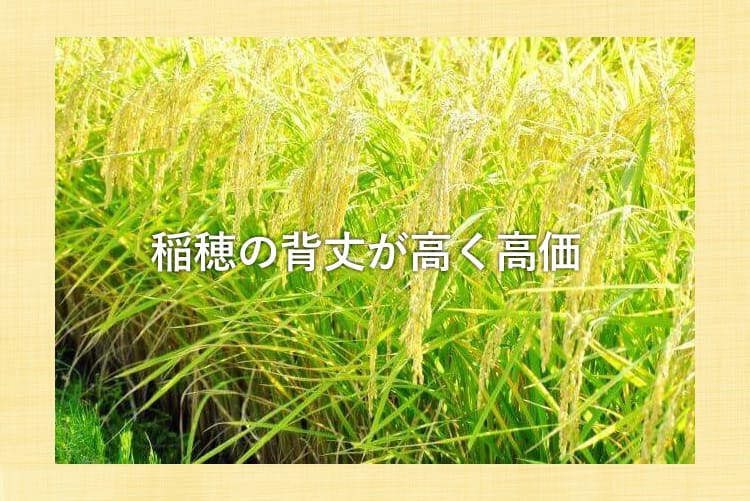
Compared to edible rice, rice brewed rice is characterized by its height.
The height of edible rice, Koshihikari and Sasanishiki, is roughly the same.About 1m20cm to 30cmHowever, Yamada Nishiki, the most brewed rice with the highest production,Over 1m50cmThere is a height. Because of its height,There is a risk of being prone to lodging, especially during typhoon seasonsIt has been with.
Although it is difficult to grow and takes timeLow yieldTherefore, the price of brewing suitable rice is naturally quite high. In the case of Yamada Nishiki from Hyogo Prefecture, it will be more than 2 times of edible rice.
The above is the basic difference between brewer's preferred rice and edible rice.
Polished rice
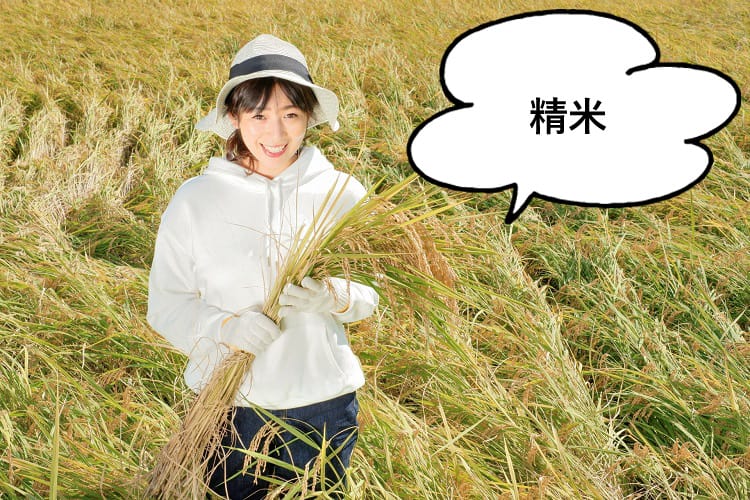
Sake brewing suitable rice cannot be used for sake brewing as it is. We use it after going through the process of scraping rice.
The main purpose of milled rice isRemove protein, lipids, vitamins and minerals in the surface layer of riceis. Protein is a very important ingredient that turns into an amino acid, which is an element of umami, but if there are too many, it becomes a factor of miscellaneous taste.
Proteins, lipids, vitamins, and minerals are nutrients for koji mold and yeast, which are microorganisms that promote fermentation.Too much will promote excessive activity, making it less likely to produce the quality you expect.There is also a disadvantage.
The rice milling method varies depending on the brewery. Many of them seem to outsource to specialized rice millers. In recent years, however, the number of rice milling equipment purchased and milled in their own breweries has increased.
Rice milling equipment is very expensive, but self-milling has the advantage that it can be managed while looking at the data so that the rice does not break. In edible rice milled rice, only about 8% is shaved,Sake brewer's preferred rice is almost scraped more than 30%is. Therefore, it takes a considerable amount of time to brew rice suitable for sake brewing.
In general,It takes about 30 hours to cut about 8%, about 60 hours to cut about 48%, and about 90 hours to cut about 60%It is said that.
By the way, what is used for rice brewing suitable for sake brewing isVertical type rice milling machineis. For edible rice milling, horizontal rice milling is mainly used. A vertical rice mill was developed in the early Showa period.
Prior to the invention of the rice milling machine, there was only a technique that could be used to boil, so it was possible to cut at most 10 to 30%.By making a vertical rice milling machine, it was possible to scrape more than 30%.. This dramatically improved the quality of sake.
The recent rapid progress in rice milling technology is remarkable. Therefore, the movement to compete for high-quality rice was spurred, and in 2017, sake using rice that had been scraped off by 99% also appeared and became a hot topic in the sake industry. On the other hand, sake using rice that can only be cut by about 10% has also appeared.
Kind of rice suitable for sake brewing
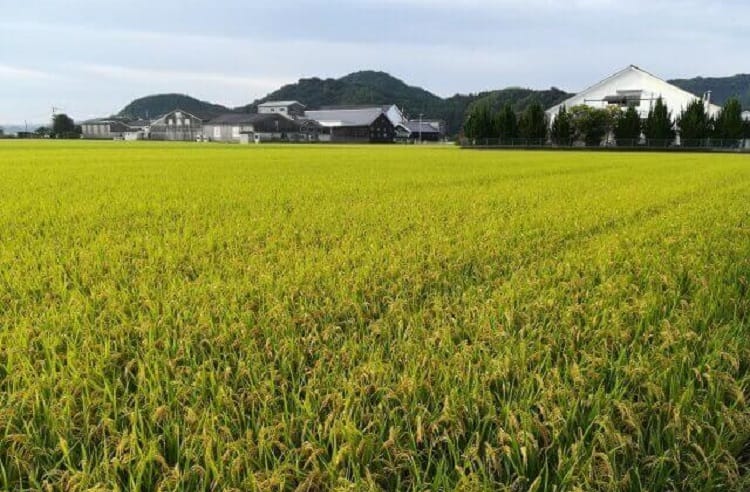
The number of rice suitable for sake brewing has been increasing, and as I wrote earlier,More than 100 speciesI will climb.
Previously, in order to be registered as a brewer's preferred rice, it was necessary for the heart to have a size that is at least 1 that is half the plane of the grain. As a result, rice brewers are now being developed in most prefectures.
The promotion of local production for local consumption and the improvement of mating and cultivation techniques are also driving the development of rice suitable for brewing.It is said that.
Typical varieties of rice suitable for sake brewing and their characteristics
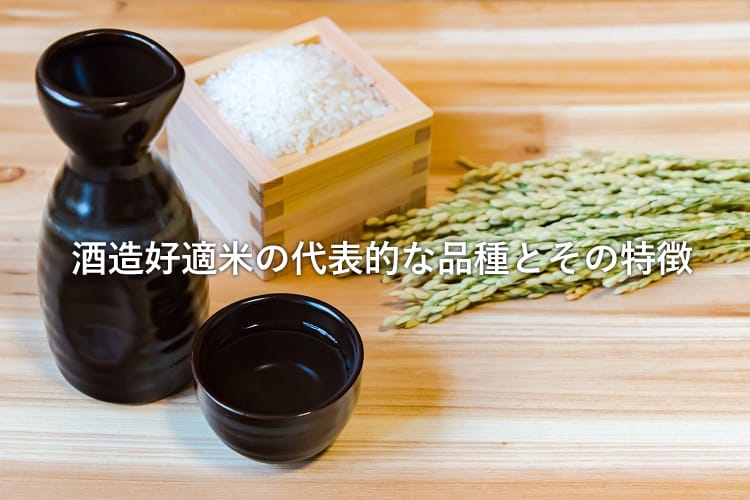
Sake brewing suitable rice, which is the main ingredient of sake, has a major impact on the performance of sake. Here, we will introduce representative varieties of rice suitable for sake brewing and their characteristics in order of the amount of production.
1st place Yamada Nishiki
Among brewery suitable rice for 100 types,Variety with the highest production volume in Japanis. Because it is large in size and reasonably sized, it can be used for stable sake brewing.
Sake made using Yamada NishikiFinished with a beautifully brewed liquor with abundant aroma and swelling.
Daiginjo Sake (sake made by shaving more than 50% of rice) and Japanese sake to be exhibited at appraisals,Alcoholic liquor made from Yamada Nishiki about 80% of the gold award-winning sake at the National New Sake Review.
As new varieties are developed one after another, both mass still“The King of Sake Brewery”Continues to be in an immobile position.
The main production area is Hyogo Prefecture, which accounts for about 70% of the total production, but is cultivated nationwide in Okayama Prefecture and Yamaguchi Prefecture.
2 rank 500 million stones
Along with Yamada Nishiki, it is known as a two-top rice brewer. Because 500 million stones are slightly harder, sake brewed with 500 million stonesOften finished in a light and refreshing dry taste.
In 1957,Named to commemorate that Niigata Prefecture's rice production exceeded 500 million stones (about 75 million tons). Until it was overtaken by Yamada Nishiki in 2001, production volume was 40 for nearly 1 years. thisOver 500 million stones and Yamada Nishiki, more than 60% of total productionAccount.
The main production area is Niigata, but it is also cultivated in the Hokuriku region such as Toyama, Fukui and Ishikawa.
3 rank Miyama Nishiki
A mutant that was born in Nagano Agricultural Experiment Station in 1978 and is a relatively new rice brewer. It has high cold resistance and is suitable for cultivation in cold regions.
Sake using Miyama Nishiki is close to 500 million stones,It is finished with a light and refreshing smart taste.. It is often used for Ginjo Sake (sake with more than 40% of rice). The name Miyama NishikiNamed for the snowy heart of the Northern Alps.
The main production area is Nagano Prefecture, but it is also cultivated in the Tohoku region such as Akita Prefecture and Yamagata Prefecture.
4 Rank Omachi
The oldest sake-brewed rice,Yamada Nishiki and 500 million stone rootsis. The origin of the cultivar is so old that it dates back to the end of the Edo period, but the production volume gradually decreased due to the difficulty of cultivation, and it was endangered in the 1970 era.
However, in recent years, Okayama Prefecture's brewing manufacturers have led the revival of cultivation, and sake using Omachi has been produced again. When you use Omachi, you can feel the unique sweetness and swelling.It is characterized by a rich and rich taste..
"Omatist"There is also a lot of enthusiastic fans called `` Oomachi Summit '', a maniac event where only sake brewed in Omachi is exhibited every summer, and many `` Omatists '' gather from all over the country It is. Events on the theme of brewing suitable rice are quite rare.
The main production area is Okayama Prefecture, and Okayama Prefecture accounts for about 95% of production.
5 Rank Akita Sake Komachi (Akitake Komachi)
New rice brewing suitable rice registered in 2004 year. Developed in Akita Prefecture aiming for quality comparable to Yamada Nishiki. Sake that uses Akita Sake Komachi, which is suitable for ginjo making.It has a high aroma, has an elegant sweetness and umami taste, and tends to be finished with a light aftertaste..
The main production area is Akita Prefecture.
6 Rank Satoshi Dewa (Mr. Dewa)
Sake brewing suitable rice representing Yamagata Prefecture called Ginjo Kingdom. Because rice is relatively soft and easy to melt, the taste of rice is easy to come out,There is a tendency to have a slightly dark flavor. The name Dewa RinNamed after the fact that the number of mountains up to 1400m in Yamagata Prefecture is 33That's right.
The Yamagata Sake Brewery Association uses 100% of this “Dewa Rin” and is a pure rice brewing sake with a rice polishing ratio of 55% or less. To satisfy the sake,"DEWA33"A project to give the title is also being developed.
The main production area is Yamagata Prefecture.
7 place
A high-quality rice brewing suitable rice developed in Nagano Prefecture. Sake with a lot of peopleThere is a tendency to finish the liquor with a wide range of tastes. It has been developed with the aim of brewing suitable rice produced in Nagano to replace Miyama Nishiki.High-yield variety with high cold resistance compared to Miyamanishiki.
The main production area is Nagano Prefecture, but it is also cultivated in Tochigi Prefecture and Yamanashi Prefecture.
8 rank Hachiman Nishiki 1
Sake brewing suitable rice representing Hiroshima Prefecture.There is a tendency to finish with a clean and elegant flavor and is suitable for ginjo sakeIt is a variety that is said to be. Sister varieties include “Hachiman Nishiki 2”.
The main production area is Hiroshima Prefecture.
9 Rank Hana Fubuki
Yamada Nishiki, which is characterized by a mellow and swelling taste, and the five-million stones, which are characterized by a linear taste.A rice brewing suitable for Aomori Prefecture. It is highly evaluated by sake rice farmers and brewers in Aomori Prefecture, and is mainly used as a raw material for pure rice sake (alcohol made with only rice, rice bran, and water, with no alcohol added).
The main production area is Aomori Prefecture. It is also cultivated in Fukushima Prefecture and Akita Prefecture.
10 rank Ginpu
Hokkaido representative of brewing suitable rice. It is a varieties that triggered the spread of sake brewing made from Hokkaido rice.Sake brewed in Ginfu tends to be rich.
Norwegian brewery “Nugune Eu”, the first sake brewer in Europe, is used as the main brewer's preferred rice. In "Nugune eu"Concept of expressing the Nordic climate and spiritOne of the reasons for choosing Ginfu is that it is from Hokkaido, where latitude is close to Norway.
The main production area is Hokkaido.
About "Special A District"
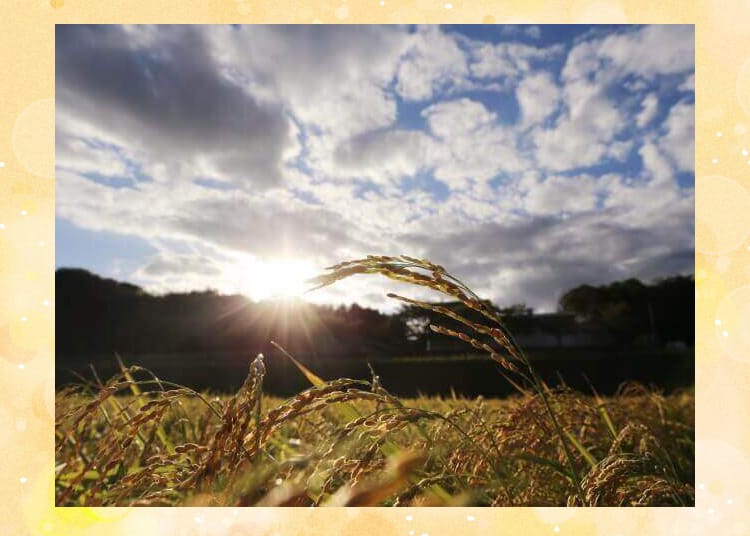
Yamada Nishiki, known as the “king of sake-brewed rice”, was born in 1936 at the Hyogo Prefectural Agricultural Experiment Station. The production area has also expanded, and now it is cultivated nationwide, but close to 70% of total production is Hyogo Prefecture, and the best among them isYamada Nishiki of "Special A District".
With "special A district"Production areas in Miki City, Kato City, etc. in Hyogo Prefectureis. This areaThe temperature difference between day and night is large, and there are plenty of nutrients necessary for cultivation of rice suitable for sake brewingTherefore, it has been known for a long time as a high-quality production area of Yamada Nishiki, but Yamada Nishiki cultivated in this "special A area" is positioned as the highest peak.
Unit of rice quantity
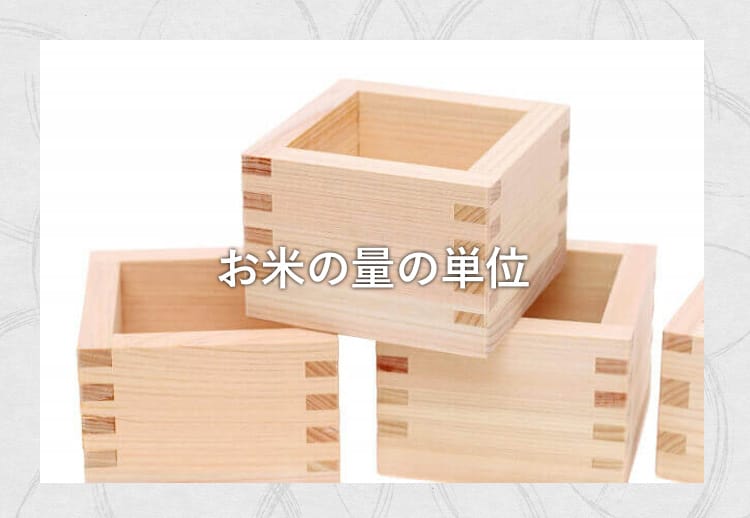
The unit of the amount of rice is `` ㎏ ''“Sho” and “Go”Is often used
1 し ゃ (shakku) about 15g
1go about 150g
1 kg (shou) About 1.5 kg
1 doo (and) about 15 kg
1 俵 (Hyo) About 60kg
1 stone (X) about 150kg
These units have been used since the Heian period, but disappeared from the official field due to the Measurement Law enacted in 1951. However, it is still commonly used as a practice today.
By the way,“1 stone = average amount of white rice that 1 people eat in 1 years”Is considered. That is“The Daimyo of 1 Wanshi” means “to support 1 million people”It will be said.
It's often called Kaga Hyakumangoku, but in other words, the Kaga lord was a Daimyo who could feed up to 100 million people.
